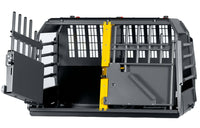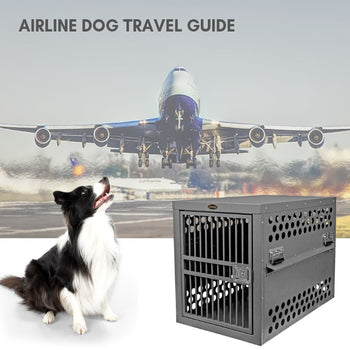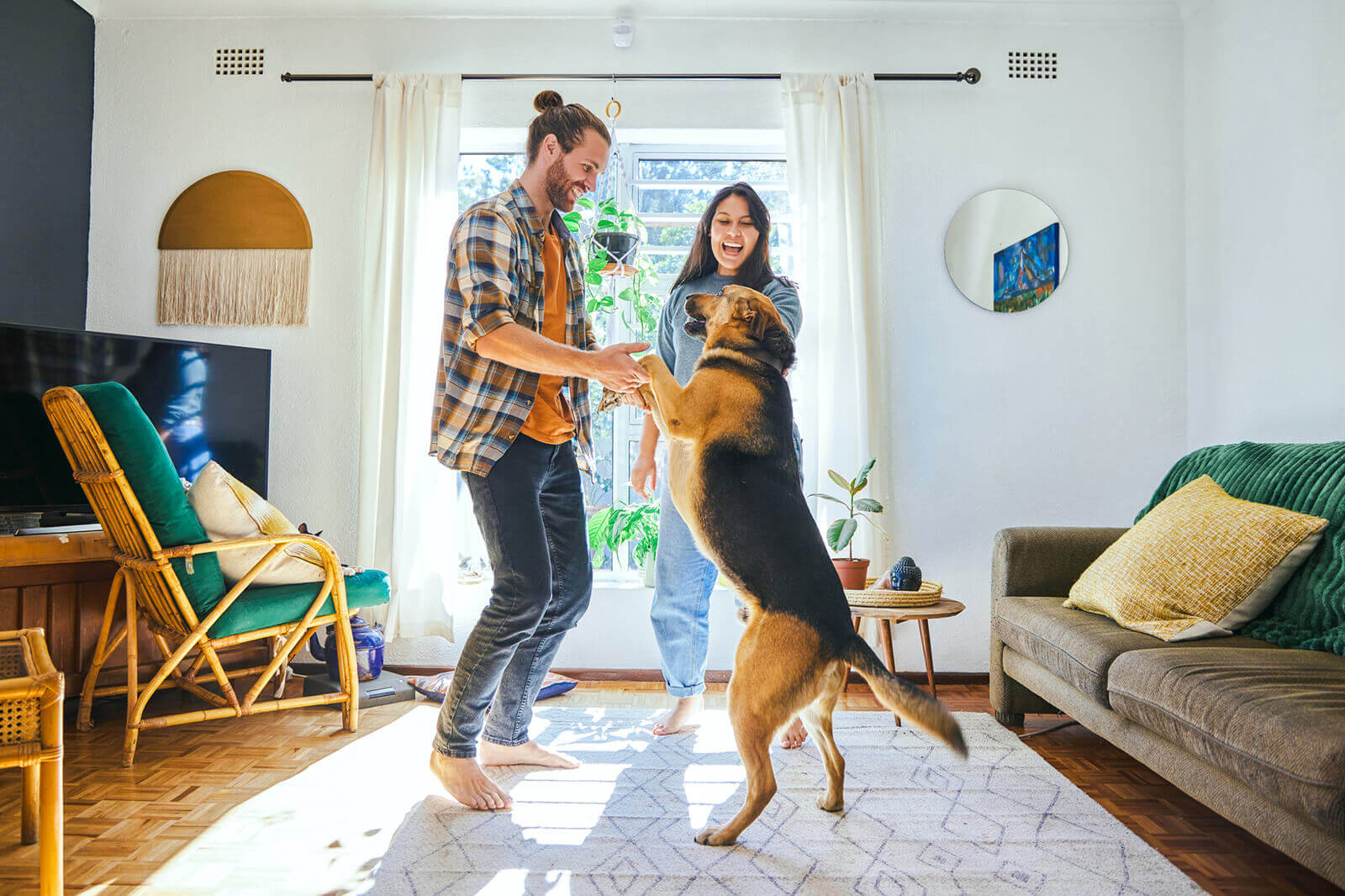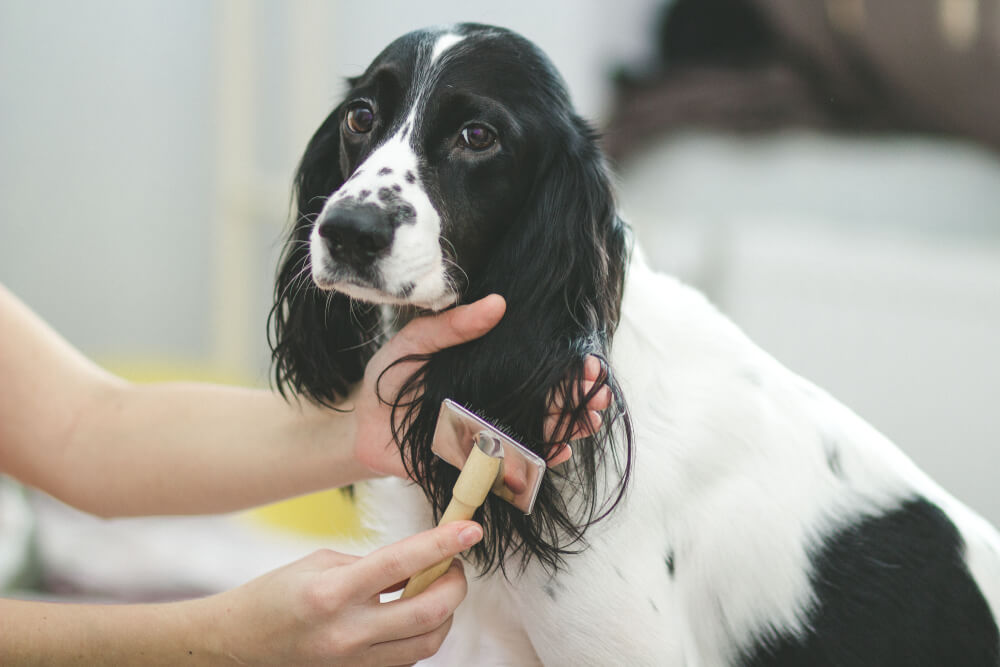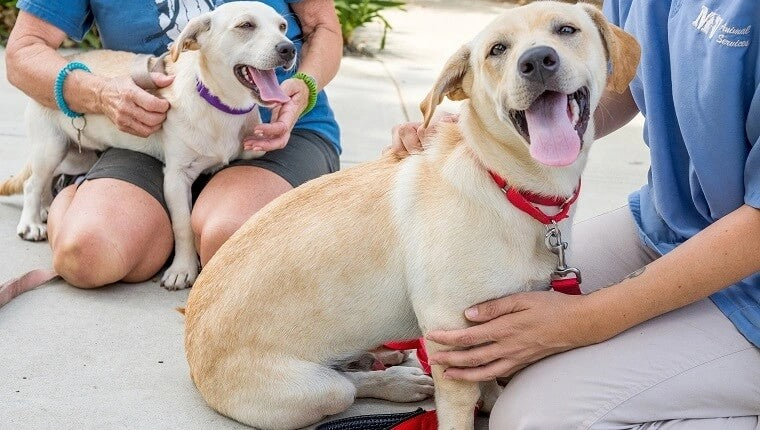
How to Crate Train Your Dog
Dogs are naturally den animals, which means they like to have their own space. In the wild, a dog’s den is their home, a safe space where he can retreat, sleep, and raise their young without fear of danger or outside threat. Crate training fulfills this natural need for a safe haven. When introduced and used correctly, the crate will be where your dog willingly chooses to sleep, hide, and nap.
Why Crate Train
If you have a new dog or puppy, you can use the crate to limit his access to the house until he learns all the house rules - like what he can and can't chew on and where he can and can't eliminate.
A crate is also a safe way of transporting your dog in the car or on a plane, as well as a way of taking him places where he may not be welcome to run freely. If you properly train your dog to use the crate, he'll think of it as his safe place and will be happy to spend time there when needed.
Cautions
A crate is not a magic bullet for poor dog behavior. If used incorrectly, a crate can become a place your dog feels trapped or frustrated. Don’t leave your dog in the crate for too long. If a dog spends all night in a crate it cannot also spend most of the day in there as well, it needs exercise. Never use the crate as punishment, it should only be a place of peace, comfort or safety for your dog.
Choose your Crate
Sizing – The crate should be large enough for your dog to stand up and turn around. For a complete guide to sizing please refer to our crate sizing guide here.
Material – Crates are normally offered in plastic and metal. We prefer metal for a few reasons. It’s easier to clean and maintain as compared to plastic. It does not hold odor, its safer for your dog as they are much less likely to escape.
Collapsible Crates – are a great option for people who have a smaller home and need to put the crate away during the day or have to travel with the crate often. These crates are made out of aluminum and conveniently fold to be briefcase-sized when not in use.
High Anxiety/Escape Artist – For those dogs who are “escape artists”, have high anxiety or are generally too strong to be kept in an average crate we have our Heavy-Duty crates that are guaranteed to keep your dog in and safe.
The Process
Crate training your dog can take days or weeks, depending on your dog's age and his temperament as well as past experiences. It's very important to ensure that above all, the crate is always associated with something pleasant. This is a critical aspect for your dog accepting this training. We have found that training in a series of small steps is far more effective than rushing this, so take your time.
Step 1 – Introduction and Familiarization with the Crate
Before your dog ever steps foot in the crate, put it in an area of your house where the family spends a lot of time, such as the family room. Put a soft blanket or towel in the crate preferable something your dog is already familiar with. Bring your dog to the crate and talk to him in a happy, positive tone of voice. Make sure the crate door is securely fastened open (you don’t what the door to hit your dog and frighten him). At this point, Do NOT force your dog in the crates, just let him get used to this new object in the room.
Next, drop some small treats near it and then just inside the door. Once he’s comfortable with that, toss some treats all the way inside the crate. If he refuses to go all the way in at first, that's okay - don't force him to enter. Continue to toss treats into the crate until your dog will walk calmly all the way into the crate to get the food, make it a game if possible and have a little fun, if he isn't interested in treats, try tossing a favorite toy in the crate. This step can be as short as a few minutes or as long as several days, be patient and let your dog set the pace.
Step 2 – Feed your Dog in the Crate
The next step is feeding your dog his regular meals near the crate. This will create a pleasant association with the crate. For very skittish dogs, you can start with meals right next to the side of the crate and work your way inside until If your dog is readily entering the crate. Each time you feed him, place the dish a little further back in the crate.
Once your dog is comfortable eating his meals inside the crate, you can close the door while he's eating. For the first couple of times, open the door as soon as he finishes his meal. Once he’s comfortable there, add a little time to the end of each feeding session until he's staying in the crate for 10 minutes or so after eating. If he begins to whine to be let out, you may have gone a little too fast for him. Next time, try leaving him in the crate for a shorter time.
Step 3 – Practice with Longer Stays in the Crate
Once your pup is eating and spending a short period in their crate following a meal without any sign of distress, start crating your pup for short periods while you’re at home. Begin by calling your dog over to the crate with a treat and an accompanying command, like “kennel” or “kennel up”. Once your dog is inside, give them another treat, shut the door, and sit quietly with your pup for a few minutes before letting them out, giving them praise and another treat.
Once your dog is comfortable with this, slowly add in minutes when you are away from the crate until your pup is comfortable with you being out of sight for 20-30 minutes.
Step 4 – Crate your dog when you leave
Now that your dog is comfortable spending 30 minutes in the crate without winning or becoming anxious, you are ready to begin leaving the house with your dog crated for short periods of time.
Give your dog a chance to relieve himself and then put him into his crate with the normal command you have been using and again give him a treat, do this anywhere from 5-20 minutes before you leave but no longer. At this point DO NOT make a big fuss about leaving or get emotional, keep it short and simple and be on your way. For your first few trips try to be back in 1-3 hours. Once he is a pro at this you can go longer but it should never be more than 4-5 hours.
When you arrive home to keep your emotions low key and reserved; do not encourage excitement as your dog will likely respond with a similar or higher level of excitement. Enter quietly, but do not go right to the kennel, instead take a few minutes to put away your things and then calmly let your dog out and give him some simple praise.
Step 5 – Crate your Dog Overnight
You’ve now made it to the last step, and whether it’s taken you seven days, or seven weeks for your dog to achieve this level of comfort, at this point, you can begin leaving your dog in their crate for extended periods or overnight as long as he or she shows no signs of anxiety. Just like as we did when we left for a longer period during the day, allow your pet to relieve himself before going to the crate for the night. Give your dog the same “kennel” command as you have been using. You can begin by keeping him close overnight, in your bedroom or just outside in the hall, then you can gradually begin moving him to another part of the home.
Problems and Pitfalls
Whining
If your dog is whining in the crate and you have followed the procedures thus far, your dog has not been rewarded for whining in the past and may just be testing you. If the whining continues for a while he may need to go potty. Make sure that this potty break is just that and not a play break as well, do not engage in any play, but go right back to the crate.
Long Periods in the Crate
For p00uppies, they may not be able to hold their bladder much longer than a few hours, so do not plan on being gone much longer than that. Generally speaking, dogs are not meant to be crated all day and all night. Your dog needs attention and physical as well as mental exercise. If you cannot provide this during the day consider a doggie daycare instead of crating all day.
Separation Anxiety
If your dog suffers from separation anxiety crate training them will not solve this problem. Leaving them alone in their crate can prevent them from chewing your couch but they may injure themselves attempting to get out. For this, we recommend consulting with a professional trainer or animal behavior specialist for help.
We hope you have found this guide helpful. By following the guidelines above you are well on your way to having a dog who is well adjusted to their crate. This will give you the peace of mind you need to leave the home, sleep or travel without worrying about your pet.
- Sep 18, 2019
- in Pet Blog

